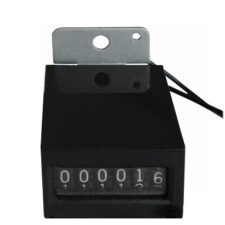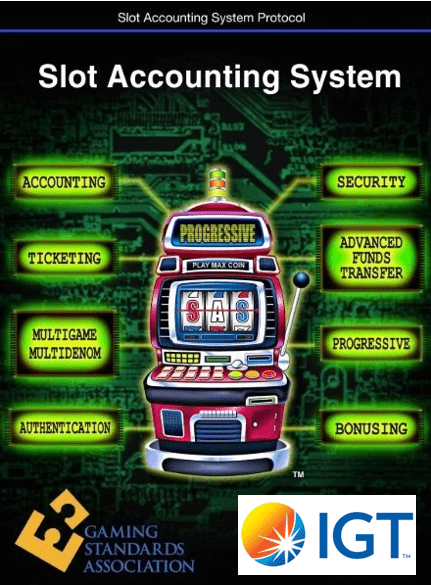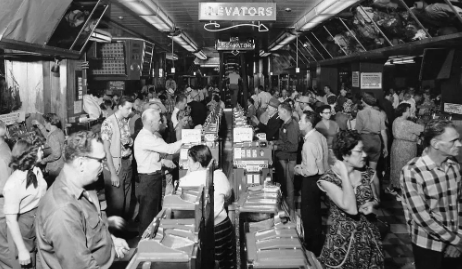Ask any slot tech, slot manager or even some of the casino’s marketing and finance folks: “What version of SAS are you using?” A lot of them will know that the answer is SAS 6.03. They know that because they are often asked by system and software vendors if they have the latest version. That answer is critical if you want to be compatible with many of today’s promotions and/or add-ons which require the latest iteration.
But if your follow up question is: “What is SAS?” you’ll probably notice an eerie silence. It’s one of the many often-mentioned, but largely unknown terms in our industry. Hopefully, this background article will shed some light on the underappreciated acronym that stands for the Slot Accounting System.
Before the age of casino automation (roughly the early 1980s), casinos kept track of their floor operations using pencil checklists, coin buckets, and manual meter reads. Then, as if stepping through a Dr. Strange-like portal to the future, came a new breed of digital magic that transformed slot operations. It was SAS.
Today, it is an industry-standard protocol and data framework used by virtually every gaming jurisdiction and machine manufacturer. But it didn’t get there overnight. The road to SAS was long, occasionally bumpy, and surprisingly shaped by some smart acquisitions, regulatory needs, and a bit of self-serving necessity.
Prior to SAS, slot machines from the 1940s to the 1970s had coin hoppers and drop buckets. If you wanted to accurately know how much a slot machine made or lost yesterday, you had to know how much money was in the machine’s coin hopper at the beginning of the day and how many times your crew filled the hoppers. Plus, was there anything in the machine’s drop bucket? Your estimates could be wildly inaccurate if the hopper or bucket was full or empty at the beginning of the shift (few casinos “dropped” their coin buckets on a daily basis).
The problem was that no one really knew those answers. They had to have faith that over time, these things would eventually balance out. Maybe.
 Most machines were electromechanical, and some of the newer ones had odometer-like meters. Those meter records were often handwritten and forwarded to accounting (by those poor souls stuck working Graveyard who were assigned to clipboard duty). If you were lucky, you might have had Bally or Sigma system spitting out crude dot-matrix printer reports.
Most machines were electromechanical, and some of the newer ones had odometer-like meters. Those meter records were often handwritten and forwarded to accounting (by those poor souls stuck working Graveyard who were assigned to clipboard duty). If you were lucky, you might have had Bally or Sigma system spitting out crude dot-matrix printer reports.
Let’s move forward to the early 1980s. IGT, founded by William “Si” Redd, had already positioned itself as a pioneer with its revolutionary S-Slot series, video poker games and later its S+ platform. By 1984, the company was quickly expanding, but slot floors across Nevada and elsewhere were still more analog than digital.
The need was obvious: casinos required better, faster, and more secure ways to monitor, audit, and manage machines. Operators were starting to demand real-time communication between slots and back-end systems, not only to improve accountability and efficiency, but to protect against count room fraud, slot cheats and audit errors.
Enter the idea of a universal communications protocol that could work across platforms, brands, and jurisdictions. In the late 1980s, slot leaders like Universal, Aristocrat, Novomatic and Bally launched their versions of this communication software. About the same time, IGT began the development of what would eventually become the Slot Accounting System (SAS) protocol. It wasn’t a slot system in the traditional sense (like Bally’s SDS, Aristocrat’s Oasis or even IGT’s SMART or Advantage systems), but rather a communications protocol. It was a digital language that machines and those early slot systems could use to talk to each other.
Rather than machines speaking in multiple languages, SAS offered a common tongue between slots and casino management systems (CMS) around the world. It allowed host systems to poll machines and receive data like Coin In, Coin Out, Jackpots, Door Openings, Error Codes, and the like.
By 1992, SAS was being installed in IGT machines in both domestic and international markets, gaining traction because of its simplicity, reliability, and
(most importantly) its availability to third-party vendors. IGT made their SAS protocol available for widespread licensing, a decision that proved genius in hindsight. While other manufacturers tried to keep proprietary systems to themselves, IGT’s open-handed approach made SAS the default standard.
According to Kevin Higgins, IGT’s Sr. Director of Global Gaming Architecture & Technology Innovation, “SAS originally began its life in the mid-1990s with a focus on machine management and accounting, and the feature set grew over time to enable industry-changing functions, such as TITO, cashless, and bonusing. Many alternatives to SAS have also existed over the years, but SAS continues to be commonly used due to its wide support across systems and games.”
As Higgins mentioned, SAS was created for accounting and monitoring, but its true killer app arrived in the late ‘90s when it enabled TITO (Ticket In / Ticket Out). The Nevada Gaming Control Board gave IGT approval to use ticketing on a trial basis around 1996–1997, and the results were game-changing.
 Before that time, many will remember that players still carried their coins and tokens in plastic cups, and casinos had teams of “key” attendants just to ensure the slot hoppers never went dry for long. TITO eliminated all of that. Players instantly fell in love with no more dirty hands or the treks to the cage for rolls of nickels or racks of tokens. For the back-of-the-house it meant no more change sorters, the end of floors littered with coin wrappers, and a dramatic reduction in injury claims from the weightlifting team known as the “hard drop crew”. Suddenly, it was just clean, lightweight printed tickets and a much better player experience.
Before that time, many will remember that players still carried their coins and tokens in plastic cups, and casinos had teams of “key” attendants just to ensure the slot hoppers never went dry for long. TITO eliminated all of that. Players instantly fell in love with no more dirty hands or the treks to the cage for rolls of nickels or racks of tokens. For the back-of-the-house it meant no more change sorters, the end of floors littered with coin wrappers, and a dramatic reduction in injury claims from the weightlifting team known as the “hard drop crew”. Suddenly, it was just clean, lightweight printed tickets and a much better player experience.
Under the hood, it was SAS Version 5 doing the heavy lifting. It handled the secure ticket issuance, redemption, and reconciliation protocols. SAS ensured that tickets couldn’t be copied and double redeemed. It tracked redemption dates and amounts and communicated seamlessly with the back-end accounting systems. Without SAS, there’s no TITO. And without TITO, modern slot floors wouldn’t run the way they do today.
An even earlier SAS version was an answer to many marketers’ dreams. SAS Version 3 introduced EFT or Electronic Funds Transfer. Along with that came the ability to issue Cashable and Non-Cashable credits. The latter laid the foundation for today’s Free Play. While there is still some abuse of this concept, it was a major step forward from the earlier practice of giving cash to players who often headed straight to the exit, the grocery store or (OMG!) to your competitor.
Version 4 also gave slot game designers and marketers the ability to add bonuses. Today, it’s hard to find any machine in the Top 100 list or any casino promotion that doesn’t take some advantage of SAS’s bonusing.
As it matured, regulators began to appreciate its consistency and security features. Nevada, New Jersey, Mississippi, and tribal jurisdictions began adopting SAS as the required protocol for machine certification.
So why do so few casino pros know about SAS…other than what version they use? It’s not sexy. No one walks around the casino floor bragging about data protocols. But SAS was the unsung hero of modern gaming regulation. It ensured that meters matched physical cash drops. It tracked machine performance. It provided airtight trails for progressive jackpots, printer logs, and player activity.

By the mid-2000s, SAS had become a global standard, used not only in IGT machines but in virtually every slot machine sold in North America and many parts of the world. Konami, Aristocrat, Bally, AGS, Ainsworth, Novomatic, and most all niche providers all built SAS compatibility into their games.
As cited above, SAS was constantly evolving. As new technologies began to emerge such as cardless login, mobile wallets, and Bluetooth-connected loyalty programs, SAS remains the silent backbone. It delivers data packets and commands that keep everything functioning like a well-oiled roulette wheel.
Here’s where IGT played its cards right. While SAS was widely licensed and supported by virtually all manufacturers, IGT still owned it. That meant any major updates or revisions came through IGT, and the protocol continued to evolve under their watchful eye.
But unlike proprietary systems that tried to wall themselves off, IGT welcomed collaboration. It wasn’t just a business decision, rather it was a strategy that made the SAS brand universal and indispensable. Every new advancement in slot technology, from downloadable content to cashless digital wallets, had to find a way to speak SAS or make it compatible with SAS.
By not locking it down, IGT ensured that every floor that used SAS was still, in a way, IGT’s, even if the various slots sported someone else’s logo.
 Of course, no system is without its critics. SAS was often criticized for being slow, due to its reliance on serial communication (RS-232 or RS-485 connections). Most modern digital hardware relies on the faster Ethernet or Wi-Fi networks. For real-time monitoring, SAS wasn’t ideal. You could poll machines in cycles, but it wasn’t a constant stream.
Of course, no system is without its critics. SAS was often criticized for being slow, due to its reliance on serial communication (RS-232 or RS-485 connections). Most modern digital hardware relies on the faster Ethernet or Wi-Fi networks. For real-time monitoring, SAS wasn’t ideal. You could poll machines in cycles, but it wasn’t a constant stream.
As slot floors started integrating more advanced analytics and business intelligence tools, some vendors (especially QCI, Gaming Analytics, and others) began relying on data scraping or API-based integrations to go beyond what SAS could offer.
Yet, despite its limitations, SAS endured. Why? Because it was reliable. It was secure. And the regulators gave it universal approval. It is also widely deployed.
As we move into new eras of cloud-based casino systems, AI-driven analytics, and cardless/cashless potentials, it’s easy to think SAS might go the way of the floppy disk or daily newspaper. But don’t count it out just yet.
 Even as newer protocols like Gaming Standards Association’s (GSA) Game-to-System (G2S) software gained fans and attention, SAS still remains the default protocol on most slot machines globally. G2S offers more bandwidth and richer features, but SAS has the history, the compatibility, and the important regulatory support.
Even as newer protocols like Gaming Standards Association’s (GSA) Game-to-System (G2S) software gained fans and attention, SAS still remains the default protocol on most slot machines globally. G2S offers more bandwidth and richer features, but SAS has the history, the compatibility, and the important regulatory support.
In a white paper on the differences between SAS and G2S, the association states, “G2S — Is a high-speed (100mb) networked protocol supporting secure TCP/IP communication channels between an EGM and multiple G2S hosts. SAS — Is a low-speed (19.2kb) serial protocol, communicating through a serial port to a single host.”
They go on to point out that SAS can’t handle newer developments like “responsible gaming restrictions,” “foreign languages,” “smart cards,” and many other advanced features. Yet, it is also worth noting that GSA did work together with IGT and SAS on the latest Version 6.03 of their software.
So, in many ways, SAS is like the QWERTY keyboard or an analog wristwatch — maybe not the most advanced option anymore, but too widely-used to replace.
If you’re a slot director, floor manager, systems analyst, or marketing innovator, chances are you’ve interacted with SAS, whether you knew it or not. Every ticket printed, every machine cleared, every bonus, every jackpot logged likely rode down the SAS pipeline.
It’s not flashy. It’s not glamorous. But SAS is one of the unsung champions of the modern gaming industry. Born out of a need for accountability, grown through smart licensing, and matured into a global standard, the IGT Slot Accounting System is a testament to how good infrastructure, done right and shared wisely, can transform an entire industry.
It has proven to be a jackpot worth remembering.
# # #
Note: If you’re headed to the internet to check out SAS, you should avoid the Scandinavian Airlines System (SAS); or the software standard known as Statistical Analysis System (SAS); and/or the acronym that is verbalized as SAS but written as SaaS. The latter implies “Software as a Service.” While there are several variants, SaaS is generally software that is centrally hosted and accessed by the user via the internet.
You’ll also want to skip Britain’s Seal Team-like elite troops known as the Special Air Service (SAS). Unless you are looking for a defense contractor and missile manufacturer, you can also pass over the Special Aerospace Service (SAS). And finally, unless you are in the auto salvage business don’t bother looking at SAS Forks.









